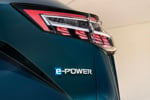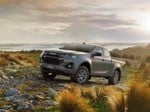Identify a marque, then pick a model. Then a variant of the model. Then what options are needed. Frustrated fleet man-agers have more things to do than determine whether a new car should come in Splendide, Decadenz or Risiblé trim, and which of the 14 available engines it should have.
If you want to buy a brand new Ford Focus in the UK today, you can choose from 380 different combinations. Across Europe there is the choice of 2,701 different Renault Meganes, according to JATO figures.
Is having such a wide choice of vehicles really a good thing for the fleet industry? It may be complex, but fleet managers must adapt to under-stand these burgeoning niche models and an ever-expanding range of derivatives. The trend for a car for every need shows no sign of slowing down.
New niches
Neil Hall, a market analyst at JATO, says the trend of offering more model derivatives has been growing over recent years.
‘Manufacturers are competing for every little piece of volume that’s there,’ he said. ‘The market is pretty saturated. You can’t get more volume by finding a new customer – there aren’t many people that haven’t bought a car before.
‘The way to increase or protect your market is to offer as many choices as possible. That’s why manufacturers are expanding into smaller niches.’
It is no longer traditional models that have several derivatives. Recent years have seen new genres of car – witness the ‘super mini-MPV’ (Nissan Note, Renault Modus), sports-SUV (Mercedes-Benz R-class), sports MPV (Ford S-Max), city-mini (Peugeot/Citroen/Toyota 107/C1/Aygo), off-road estate (Volvo XC70 and Audi Allroad) and more, which in turn have huge numbers of different derivatives.
Peter Green is manufacturer liaison manager at Lloyds TSB autolease. He said fleet managers faced confusion about which of these new types of car to go for.
He said: ‘Manufacturers have definitely moved beyond the traditional ABCDE categories to specific sub-categories and now models are being introduced that even blur the lines between these sub-categories.’
‘Because these new models are blurring the boundaries between the traditional vehicle categories, it is becoming more difficult to benchmark them in order to set pricing levels.
‘In cases like the new Nissan Note, where apart from the Renault Modus there are currently no comparable vehicles on the market, there is an inherent risk in funding them.
‘These new models will potentially pose problems for our customers. Fleet managers will have an increasingly complex job when setting their fleet policies since many new models do not fit easily into traditional vehicle categories.’
The fleet managers’ association Acfo says new niche sectors are a natural part of automotive evolution and something fleet managers would have to learn to deal with.
Variants
So do we really need all these cars? According to automotive information suppliers JATO Dynamics, 67% of C-segment sales (medium-sized family cars) in Europe come from just 10% of available vehicles. So what’s the point in offering choices galore when the majority will rarely be chosen?
Jeff Knight, forecast manager for CAP Motor Research, said manufacturers were increasingly creating new models that were actually a standard car with a particular option. A ‘Multimedia’ edition of a car would just have satellite navigation included, for example. Where automatic transmission used to be an option, now an automatic is a separate model.
Knight explained: ‘Manufacturers can put these models on ordering lists much more easily now. Some organisations won’t let staff order options, but if the extra equipment is already included in a separate model, they don’t have to.’
More cars can be built on the same platforms, and more engines are being produced, particularly new diesel units in an attempt to capture the corporate market.
Hall said: ‘It’s hard to predict whether this trend will continue.
‘There are derivations of cars on our database that have a volume of zero. But sometimes the cost of having a particular combination is just the ink on the page.’
Acfo believes the range of variants is a monumental problem for the industry, and is calling for manufacturers to slim down their ranges.
Additional problems include sourcing parts, which become harder to find as the line-up constantly changes.
A spokesman said: ‘Every variation costs money and there’s only one person who pays that – the customer. I’m not suggesting that we go back to any colour as long as it’s black but manufacturers should stop trying to be all things to all people.’
Options
Hall said European marques, or cars built in Europe, tended to be the ones with the most options.
Honda’s Civic is built in Swindon and is available in 45 different guises, but the Accord and Jazz, which are put together in Japan and shipped over, offer far fewer variants – more options would mean more cars have to be custom built, which with a long shipping distance would mean longer waiting times.
‘Closer factories mean shorter delivery times making it easier for manufacturers to build bespoke cars, rather than hope customers pick an ‘off-the-shelf’ model,’ he said. And there are no production cost issues in offering this choice, the carmakers claim.
‘We like to offer our customers a large choice,’ a spokesman said. ‘Production is now designed in such a way that it’s easy to custom build. It’s so easy to integrate everything.’
Modern computer technology means that orders can be integrated into the production line, so workers can just slot components into the appropriate shell.
But for fleet managers, this can create an administration headache as drivers order myriad different extras.
Acfo advises setting clear allocation rules. A spokesman said: ‘If someone gets a £300-a-month business vehicle but then specs it up like a Christmas tree, you’ll never be able to reallocate the vehicle if they leave and it will be difficult to place in the market at the end of its cycle.’















Login to comment
Comments
No comments have been made yet.